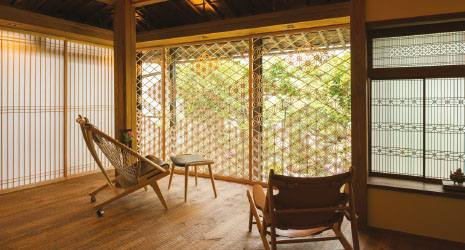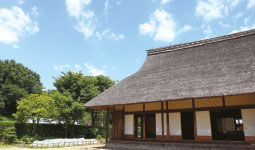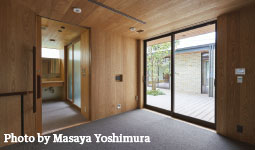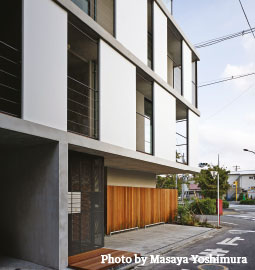Home > Highlighting JAPAN > Highlighting Japan August 2018 > How to Enjoy Summer in Japan
Highlighting JAPAN


Various Ways to Stay Cool at Home in Summer
For centuries, Japanese houses have incorporated various ingenious ideas to keep them cooler in the blistering heat and humidity of summer. Rearranging the home in early summer and using materials and items suitable for the season also allow people to live in cool comfort.
Summer in Japan is characteristically hot and humid. It’s written in an old book that “when building a house, make living in the summer a priority.” Houses from past times exemplify such wisdom, and were designed to thwart summer’s heat and humidity,
Atsushi Kasuya, a first-class architect and founder and representative of Kasuya Architects’ Office, explains. “The measures that should be incorporated into a home are to avoid too much direct sunlight and ensure that there is a way for a breeze to pass through and prevent a buildup of humidity,” he says. “In addition, the thatched roofs with deep eaves and simple room layouts with no corridors that we see in old houses can be considered uniquely Japanese ideas.”
Thatched roofs made with the stems and leaves of plants like Japanese silver grass or reeds—built up to around eighty centimeters thick—have very high insulating properties and block the sun’s heat. The deep eaves at the ends of the roof also prevent sunlight from reaching indoors. A singular feature found in old houses is that they have no corridors, and simply opening the sliding doors that separate areas such as the doma (an earthen-floored entrance space) and the hiroma (main room) allows breezes to pass through the structure.
Kasuya mentions that modern houses also employ similar measures against heat. “When left open, sliding doors allow more of a breeze to pass through, and unlike some Western-style doors don’t get in the way. Because they are beautifully self-contained, I often incorporate them in the windows and partiti
ons of houses that I design.
“In the summer, the use of kumiko joinery partitions made of thin wood without any nails or fittings allows a good breeze to flow, and lends the place a refreshing appearance as well,” he continues. “Having a layout that doesn’t divide the space up into many sections creates a more open and comfortable expanse, and not only provides good indoor ventilation but also improves the effectiveness of air conditioning throughout the building.”
New building materials are also helping to defeat the summer heat. “Deepening the eaves to block direct sunlight is done mainly on the south side of buildings, but it is harder to do this for the evening sun coming from the west,” Kasuya notes. “For condominiums that I’ve worked on, we set up screens of white fiberglass on the south and west balconies. These screens block direct sunlight, but since they are translucent they still allow natural light into the rooms.”
Meanwhile, when it comes to daily life, many families rearrange their homes by incorporating cooling materials and items as the summer approaches.
“By switching out rugs, table linens and other soft furnishings with highly absorbent materials that have a silky feel, like linen, rattan and rushes, it will feel cooler even in the middle of summer,” says Koto Nirei, the shop manager of Kurashinokatachi. These days there are innovative and modern products created from time-honored Japanese materials, in a range of colors and designs that blend in perfectly with today’s interiors. In addition, placing glassware on a dining table or hanging a wind chime in the eaves provides the eyes and ears with a wonderful sensation of coolness.”
Mosquito nets, which have been used to repel insects since ancient times, are also enjoying a resurgence as an item that promotes cool living. “Using pure linen cloth lowers the humidity and effective temperature inside the net, allowing for more comfortable sleep,” Nirei explains.
Using traditional architectural strategies to keep homes breezy and incorporating interior furnishings that give a sense of coolness are not only ways to beat the heat, but also examples of wisdom about how to make the most of the summer season.
© 2009 Cabinet Office, Government of Japan









